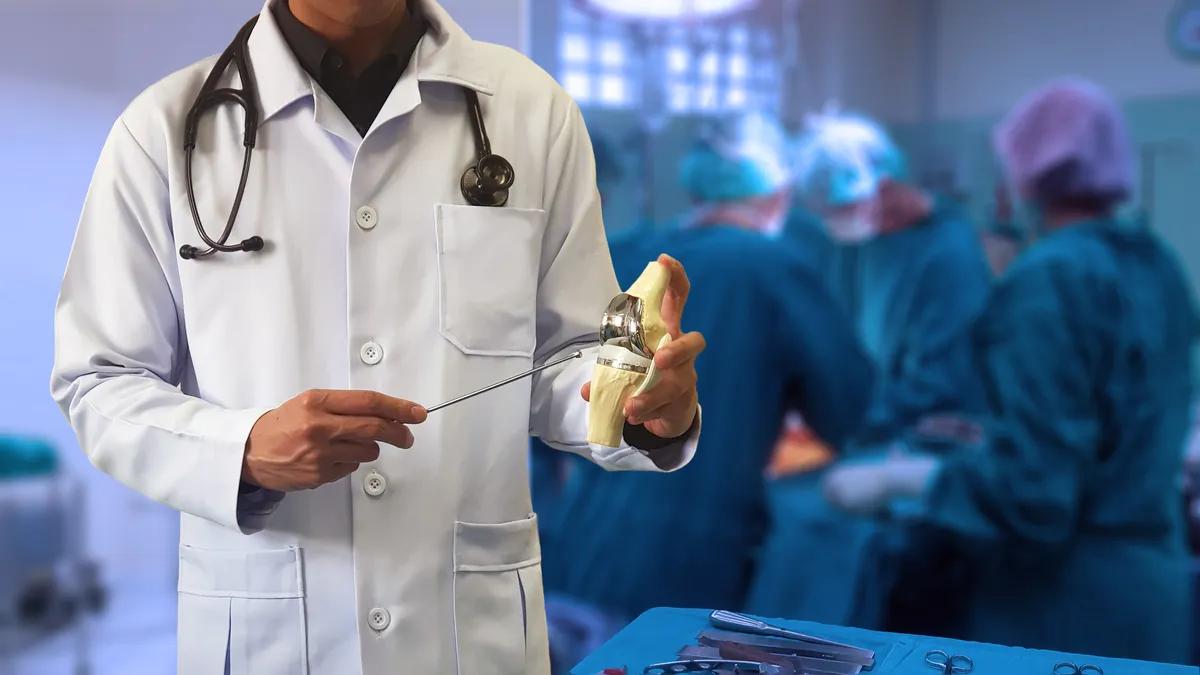Dive Brief:
- The outlook for orthopedic procedures “appears far more favorable” than one year ago and will support growth in the coming quarters, according to analysts at BTIG.
- After talking to medtech companies at the American Academy of Orthopaedic Surgeons (AAOS) meeting, the analysts said they expect improvements in staffing and a backlog of patients to translate into “robust knee and hip growth for at least the next 4 to 6 quarters.”
- The analysts continue to favor Stryker over Zimmer Biomet, although they think the latter company will benefit from improving patient volumes and the launch of its cementless knee.
Dive Insight:
One year ago, inflationary pressures and supply chain problems dominated discussions at AAOS. This year, inflation remains high and some supply chain problems persist, but the analysts found companies were singing “a far different tune,” encouraged by a procedure outlook that appears more favorable. Attendance at the event returned to levels last seen in 2019.
The BTIG analysts expect the backlog of patients that built up in recent years to support growth of hip and knee devices for 12 months or more. On a constant currency basis, Stryker’s hip and knee divisions achieved double-digit growth last year, and the analysts expect that trajectory to continue.
Management at Stryker told the analysts that many older and sicker patients are coming back into the system, and while healthcare staffing is still an issue, it is being handled better than in the past. In addition to Zimmer, Stryker competes with Johnson & Johnson and Smith & Nephew for the knee and hip markets.
Stryker, which debuted version 2.0 of its Mako robot at the event, remains the analysts’ favored firm in the orthopedic sector but they also expect Zimmer to benefit from the improved procedure outlook. Zimmer received 510(k) clearance for its Persona OsseoTi Keel Tibia late last year, addressing the lack of a cementless knee that hurt its competitiveness.
Talking to the analysts, Zimmer management forecast a 10% to 15% lift in average selling price from the cementless device. Today, the cementless product accounts for 12% to 14% of knee procedures done using Zimmer devices, the analysts wrote, and management plans to grow that figure to 20% to 30%. As the analysts note, Zimmer is “still well below [Stryker’s] cementless share of wallet."










